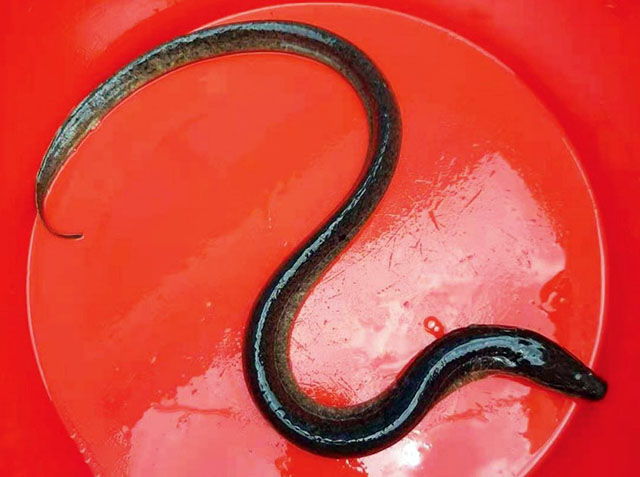| Synbranchidae (Swamp-eels) |
| 100 cm TL (male/unsexed) |
|
demersal; freshwater; brackish |
| Asia and Oceania: India and Sri Lanka to south-eastern Asia, Indonesia, Philippines and New Guinea. Recorded from Australia (Ref. 7300) and Palau (Ref. 6371). |
|
|
| Adults inhabit both fresh and brackish waters of rivers and swamps (Ref. 2847, 44894) or near the river mouth (Ref. 13533). They occur mainly in thick vegetation of muddy, still water bodies, such as lagoons, swamps, canals and rice fields (Ref. 6028). Live in soft bottom sediments in quiet, well vegetated backwaters of brackish estuaries and nearby swamps (Ref. 44894), usually in burrows. Prefer estuarine or tidal areas, as efficient burrowers. The male guards and builds nest or burrow (Ref. 205). Marketed fresh, usually not kept alive for long periods of time (Ref. 12693). |
|
Least Concern (LC); Date assessed: 11 August 2019 Ref. (130435)
|
| harmless |
|
First collected in Quingua River, near Calumpit, Pampanga; reported from Navotas, Manila; Baybay creek, a tributary of Lake Buhi; Apo Reef, west of Mindoro; and in bangus fishponds of Bulacan and Pampanga (Ref. 12748). Caught rarely in Laguna de Bay; not a popular food fish. Museum: east bay, LRS-83114 (Ref. 13460). Also Ref. 4833, 2847, 7050, 41236. |
Source and more info: www.fishbase.org. For personal, classroom, and other internal use only. Not for publication.

